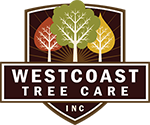Is Your Tree in Trouble? 6 Signs of Tree Stress Portland Homeowners Shouldn’t Ignore
Spring has arrived in Portland, and trees across the city are starting to leaf out and show signs of new life. But not all trees bounce back after winter with the same energy. Some may show subtle—or not-so-subtle—signs of stress that could threaten their health, structure, or lifespan.
At Westcoast Tree Care, we’ve been working with homeowners throughout the Portland metro area this spring to identify early warning signs of tree stress and recommend preventative care. If you’re wondering whether a tree on your property might be in trouble, here are six key indicators to watch for this season.
1. Sparse or Delayed Leaf Growth
By mid-spring, most healthy trees should be well into their growing season. If a tree is lagging behind—producing only a few leaves or none at all—it could be a sign of root damage, trunk injury, or underlying disease. Compare it to nearby trees of the same species for a clearer picture.
2. Yellowing or Curling Leaves
Leaves that are yellow, curled, or scorched at the edges can indicate water stress, nutrient deficiencies, or fungal infections. Portland’s clay-heavy soil retains water, which can lead to root rot and poor oxygen flow—especially after a wet winter.
3. Cracks or Wounds in Bark
Inspect your tree’s trunk and large branches for visible splits, gashes, or peeling bark. These can be signs of internal decay, past storm damage, or even frost injury from colder months. Cracked bark exposes trees to disease and insect infestation.
4. Early or Unusual Leaf Drop
If your tree is already shedding leaves in spring—or only producing leaves on certain limbs—it’s a red flag. This type of leaf drop is often a stress response to internal damage or root problems.
5. Fungal Growth at the Base
Mushrooms or fungal bodies growing around the trunk or root flare are signs of decay below the surface. In Portland, this is common in trees with saturated root zones or poor drainage. Left unaddressed, these trees may become structurally unstable.
6. Dead Branches or Uneven Canopy
A healthy tree has a balanced, full canopy. If you notice bare limbs, dieback at the tips, or an uneven shape, your tree may be dealing with stress from pests, disease, or nutrient imbalance. Deadwood should always be removed to prevent breakage and improve tree health.
What Causes Tree Stress in Portland?
Several local environmental factors contribute to stress in Portland-area trees:
- Saturated soils from heavy winter rain
- Poor drainage in compacted urban landscapes
- Past storm damage that went unnoticed
- Overcrowding from nearby trees or structures
- Improper pruning or root disturbance
Why Early Detection Matters
Catching these signs early can make the difference between preserving a mature, valuable tree and needing a full removal later. Stressed trees are more vulnerable to pests, windthrow, and disease—and they can become a serious hazard if ignored.
At Westcoast Tree Care, we specialize in preventative care that helps trees recover from stress, stay strong through summer, and continue providing beauty, shade, and safety to your property.
Free Tree Assessments Available in Portland
If you’ve noticed any of these warning signs—or simply want peace of mind—our team is currently offering free, no-obligation assessments in the Portland metro area. Our ISA Certified Arborists will evaluate your trees, explain any issues we see, and provide expert recommendations.
Contact Westcoast Tree Care today by filling out our online form or calling 1.800.767.8733 to get a no-cost, no-obligation for any of our Portland tree care services.








